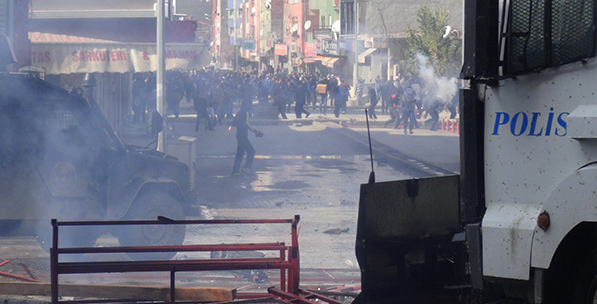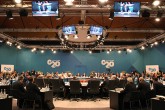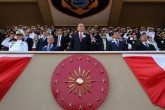Almost a month has passed since the events that took place on Oct. 6-8 which left a serious scar on the social psychology of the region. It is possible to see the debates and discussions regarding the events in every corner of Diyarbakır today. Almost everyone has an anecdote about the events and many say that they have never witnessed such events in recent history, especially in terms of its destructive force and its impact on society. Since the events there has been little effort exerted trying to understand the nature of how it all unfolded. Many analysts prefer to call it a protest against the Turkish government due to its agenda regarding Kobani. However, when one conducts talks to the civil society leadership of Diyarbakır the issue becomes more complicated.
First of all, there is confusion and skepticism among residents concerning how the events unfolded and how the control slipped away from authorities leading to a situation that is for some unprecedented in the history of the region. For the people in the region, it was the first time looting had taken place in the city center of Diyarbakir. Furthermore, it was the first time in many years that political violence had erupted between different Kurdish groups. In previous years, during demonstrations, there were some attacks on certain buildings in the city, but it never transformed into a systematic looting campaign that destroyed grocery shops, banks and jewelry stores. More significantly, the lynching of youths that took place during the events had never been witnessed in the past. Some demonstrators not only killed bystanders who were believed to belong to rival political groups, but also threw the bodies from a balcony, burned the bodies, hit the bodies with sticks and then ran over them with cars. The narrative of the incidents provides some discrepancy regarding the political leaning of the narrators, but there were some significant commonalities among them, specifically, the development of the incidents, the derailing of the protests, and the emergence of “unidentified dark forces,” which is regarded by some to be “deep PKK” and by others “former deep state members,” both of whom are trying to halt the reconciliation process.
Those who witnessed the incidents of those three unfortunate days in the region tell the story of the events as if it was a nightmare. Calls to assist Kobani took place at different instances in the region after the crisis in the small border town erupted. However, these protests never turned into violent incidents. When the People’s Democratic Party (HDP) called for one more protest on Oct. 6, many people were expecting similar small scale demonstrations. In terms of the number of protesters, Oct. 6 was not so different however, their destructive effect was more than anyone could have imagined. According to residents and “netizens” in the region, the effective use of media by some groups and provocations on social media were particularly important in increasing the intensity of the protests.
There was apparently a sharp difference between the protests in the morning of the first day and the incidents after sunset. For many people in the city the evening demonstrations took a more radical turn. Three different groups emerged from this mayhem. The first group attacked Free Cause Party (HÜDA PAR) targets and more conservative Kurds in the region. The reason for these attacks is still unknown. Some tried to explain in the first days of the events that it had something to do with the belief among some Kurds that HÜDA PAR is ideologically the same as the Islamic State of Iraq and al-Sham (ISIS). Not only are the ideologies of HÜDA PAR and ISIS different but HÜDA PAR was declared non-Muslim by ISIS due to a theological disagreement.
The second group of protesters mainly attacked stores and shops in city centers and coordinated the looting in the city. Again, the identities of those who were responsible for the looting are not entirely known, but suspicion in the city seems to be targeting



